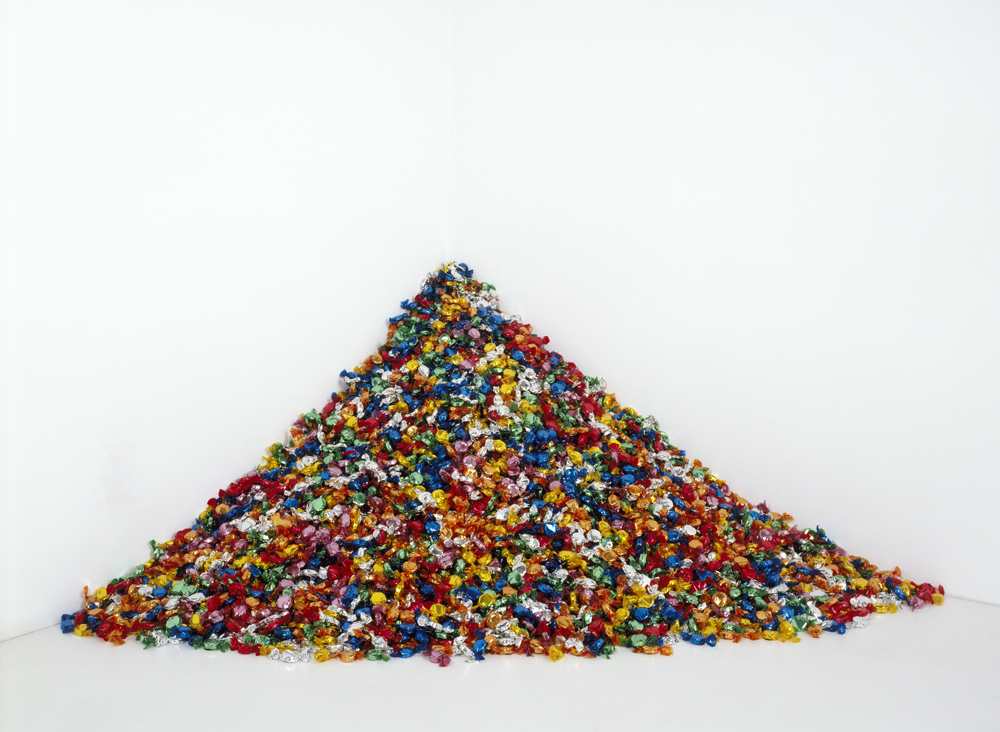When an object loses its place, it becomes the abject; it slips between boundaries of what is attractive or repulsive, precious or worthless, alive or dead. The abject object moves across such categories while retaining a haunting memory of both belongings — a threat and promise that these categories themselves can be breached.
Scaled up in memory as the subject of art, the abject is memorialized. For example, Nina Katchadourian makes an “uninvited collaboration with nature” to mend a tattered spider’s web, stitching into reality what could easily be forgotten in brightly-coloured thread.
Félix González-Torres remembers the body, affection and decline of his dead lover by faithfully re-materializing his medically ideal weight as a pile of candies, creating a new body freely offered for the public to take from what they may.
Happening upon a puzzle piece lost in the cold, Kerri Reid constructs a new image and home from its abject conditions, and repackages the imperfect whole by hand. While Reid goes to the trouble of finding a new retail environment for this stranger, Claes Oldenberg and Coosje van Bruggen enlarges the spat-out remains of an apple core to monumental proportions.
Stephen Shanabrook‘s confectionary impressions of fatal wounds make tangible a thingness so marginal that it can’t be discarded. For Shanabrook, the monument is not something that commemorates a past, but rather a complex material of senses that is indelible in presence, edible in experience, and so elusively delible once again.
jes sachse’s project Freedom Tube pays homage to a small but crucial everyday tool the artist uses to accommodate their disability: the classic red and white drinking straw.
The concluding images of this archive offer the “lost and found” posters created by students who retrieved and revalued lost fragments and unnamed entities during a residency.














